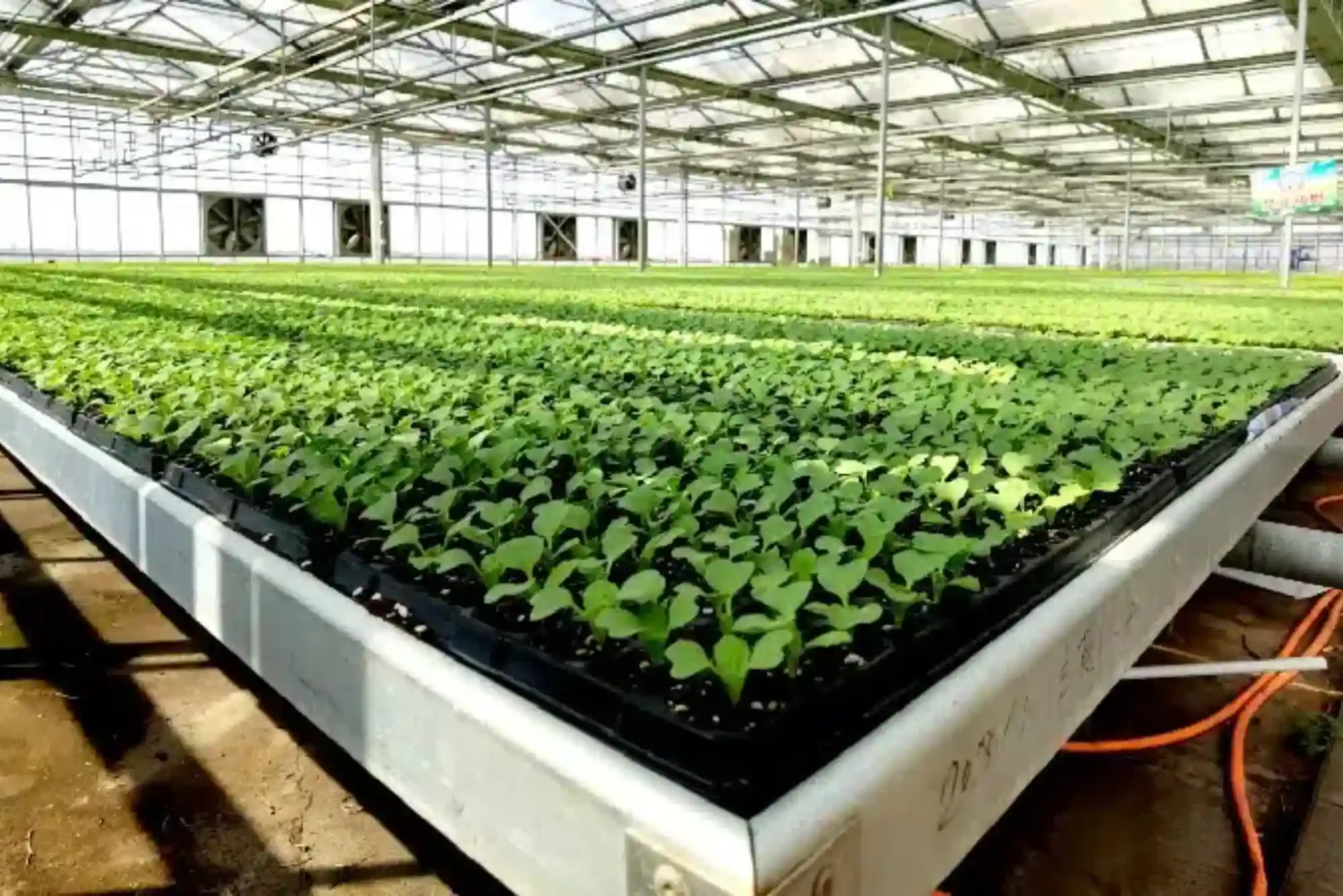Greenhouse design has become a fundamental part of modern agriculture, especially in regions such as Pakistan, the UAE, India, and the UK, where climatic variations demand accurate planning. Today, growers rely heavily on greenhouse area calculators to optimize space, temperature, ventilation, and yield. As agriculture becomes more data-driven, advanced digital tools offer farmers precise measurements and streamlined workflows.
This guide breaks down the most effective greenhouse area calculator methods, showing how greenhouse owners, agri-students, and commercial farmers can make smarter decisions using structured calculations. The article also includes real-world examples, expert insights, regional programs, and precise methods trusted internationally.
Greenhouse Area Formula Basics
Quick Answer: Greenhouse area is calculated by multiplying length × width, with modifications based on shape and structural design.
Understanding the basics ensures that any further calculation—ventilation, heating load, or crop spacing—is accurate. The most common greenhouse structures include tunnel-type, dome-shaped, gable-roofed, and multi-span units.
Core Concepts
-
Rectangular greenhouse: Area = L × W
-
Dome or circular greenhouse: Area = πr²
-
Multi-span greenhouse: Sum of individual span areas
Example
A 30m × 12m tunnel greenhouse:
Area = 360 m²
Accurate measurement improves irrigation design, temperature control, and crop zoning—especially in climates like Punjab and Sindh, where summers demand resilient planning.
Measuring Greenhouse Dimensions Accurately
Quick Answer: Use measuring tapes, laser distance meters, and blueprint references for precise greenhouse dimensions.
Accurate measurements are the foundation of any successful calculation. Even slight deviations affect heat load, fan capacity, and crop layout.
Recommended Tools
-
Laser distance meters
-
Digital blueprint replicas
-
GPS-based surveying apps
-
Basic farmer-friendly tape tools
In regions such as Gujranwala, Rahim Yar Khan, and Sahiwal, government-supported agriculture training centers guide local youth in using measurement tools for modern farming.
Understanding Shape-Based Greenhouse Calculations
Quick Answer: Different greenhouse shapes require different area formulas for accurate planning.
Common Shapes and Their Calculations
1. Rectangular/Tunnel Structures
Ideal for commercial vegetable production.
2. Gothic Arched Structures
Area is calculated using modified width × length, accommodating curved roofs.
3. Circular/Dome Greenhouses
Use πr² for area and incorporate height variations for heating estimates.
Shape matters significantly in areas with strong seasonal winds, such as Quetta and Peshawar, where dome structures often outperform tunnels.
Using Digital Greenhouse Area Calculators
Quick Answer: Online calculators simplify area estimation and reduce human error.
Digital tools are now heavily used by local extension departments, greenhouse startups, and youth agritech programs across South Punjab and Balochistan.
Benefits include:
-
Rapid calculations
-
Automatic error correction
-
Shape-specific formulas
-
Integration with heating and cooling models
These calculators also support scenario simulations, allowing growers to test greenhouse expansions before investing.
Temperature, Ventilation & Spacing Add-Ons
Quick Answer: Area calculators help integrate ventilation, heat load, and crop spacing calculations for accuracy.
Modern systems include modules for:
-
Required fan capacity
-
Heating or cooling tonnage
-
Airflow per cubic meter
-
Plant spacing grids
-
Sunlight exposure patterns
For instance, strawberry growers in Murree use area-temperature integrations to protect winter crops from frost.
Common Mistakes to Avoid in Greenhouse Calculations
Quick Answer: Avoid guessing measurements, skipping shape adjustments, and ignoring microclimates.
Frequent Errors
-
Assuming all greenhouses use rectangular formulas
-
Neglecting roof curvature in arched houses
-
Overlooking air-gap measurement
-
Ignoring regional wind patterns
-
Using incorrect insulation values
Agricultural consultants in Faisalabad confirm that poor initial area calculations often lead to 25–35% crop loss in extreme seasons.
Why Precision Matters for Modern Agriculture
Quick Answer: Accurate greenhouse calculations lead to higher yield, better climate control, and cost efficiency.
Precision ensures:
-
Optimized plant spacing
-
Efficient resource use (water, fertilizer, energy)
-
Reduced operational costs
-
Healthier crop cycles
According to a 2024 international study, growers using structured greenhouse calculations reported up to 40% improved yield stability—a powerful incentive for adopting modern methods.
Mid-Point Practical Toolkit for Growers
Quick Answer: Combine calculators, formulas, and digital tools for consistent accuracy.
At this midpoint of the article, here is a practical bundle that growers globally use:
-
Manual formula checks
-
Digital measurement devices
-
Online area and temperature calculators
-
Greenhouse design templates
-
Crop spacing grids
For growers also handling chemical mixing in fertigation or irrigation setups, a reliable solution concentration calculator ensures nutrient accuracy, preventing plant burn or deficiencies. Growers who prefer using a unified dashboard can explore an accurate and simple calculators collection that integrates everyday farming math into a single platform, while future agripreneurs exploring digital agriculture startups can benefit from professional IT services in Pakistan to build custom greenhouse management tools.
Advanced Computational Methods for Large Farms
Quick Answer: GIS mapping, drone measurements, and CAD software offer scalability for commercial farms.
Large farms in Sindh’s Tando Allahyar, Sukkur, and Chakwal increasingly use:
-
Drone-based area scanning
-
GIS-driven land segmentation
-
AutoCAD greenhouse layout modeling
-
AI-based simulation tools
These technologies provide centimeter-level accuracy, reducing structural errors during installation.
Regional Government Programs Supporting Greenhouse Development
Quick Answer: Pakistan and neighboring countries offer training and subsidies for modern greenhouse farming.
Examples
-
Punjab Agriculture Department Youth Training Program – Greenhouse management workshops
-
KPK Agri-Innovation Fund – Supports protected farming startups
-
Balochistan Horticulture Development Project – Encourages low-cost greenhouse adoption
-
UAE’s agritech accelerators helping South Asian growers adopt climate-smart practices
Such programs uplift farmers, enable modern tools, and increase the adoption rate of greenhouse technology.
FAQs
1. What is the easiest method to calculate greenhouse area?
Use the length × width formula for rectangular structures; for other shapes, digital calculators are fastest.
2. What tools do farmers commonly use?
Laser meters, measuring tapes, GIS maps, and online calculators.
3. Do greenhouse dimensions affect temperature?
Yes. Larger areas require more ventilation, cooling power, and heating load calculations.
4. Can I use one calculator for different shapes?
Yes, many digital tools now support multiple structure types, including domes and arches.
5. Should small farmers use digital calculators?
Absolutely. Even a 1–2% error can affect yield or humidity balance.
6. Do area calculators help reduce costs?
Yes. Optimized layouts lower energy, fertilizer, and labor costs.
7. What happens if I miscalculate greenhouse area?
You may overspend on materials, misalign ventilation, and reduce crop health.
Final Thought
As someone who has worked closely with greenhouse planners, local growers, and digital agriculture startups in Pakistan, I’ve seen firsthand how accurate area calculations transform small farms into scalable agribusinesses. Whether in Punjab’s vegetable belts or Balochistan’s Emerging high-tunnel markets, farmers gain confidence and efficiency when using structured calculator methods. With training programs expanding and digital tools becoming more accessible, this is the best time for growers to embrace reliable, data-driven greenhouse planning.




